Over the years, I’ve seen a number of spectacular azaleas at exhibits like Taikan-ten and Kokufu-ten – trees with super trunks, interesting movement and full canopies. I’ve appreciated them for years and they make a compelling case for satsuki azalea as a great variety for bonsai.
On a recent visit to the Kobayashi Sangyo company – a major satsuki garden in Kanuma City – it took me by surprise how much I was taken by rough stock that had recently been dug from the field. The trees had very interesting trunks and primary branches but were in need of maybe ten years of branch work – the kind of work I enjoy but have yet to undertake with such awesome material.

Field-grown azalea
On the day we visited, one of the nursery’s workshops was filled with recently dug specimens. The trunks were in good shape, but the primary branches needed some tune-up and the secondary branches wouldn’t be started for another year or two.
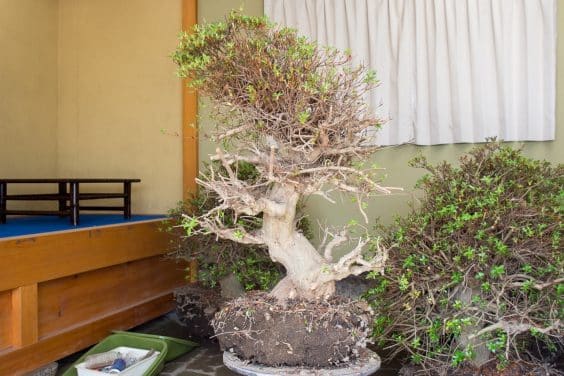
Straight from the field
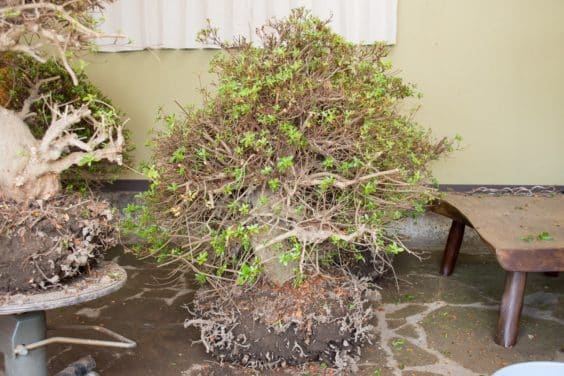
Another field-grown specimen
I think these trees struck me because it was clear that investment in the time it would take to grow branches for these trees would be rewarded with awesome results.
On the other end of the spectrum were wired whips – the starting point for enthusiasts willing to invest some time in developing the trunk.
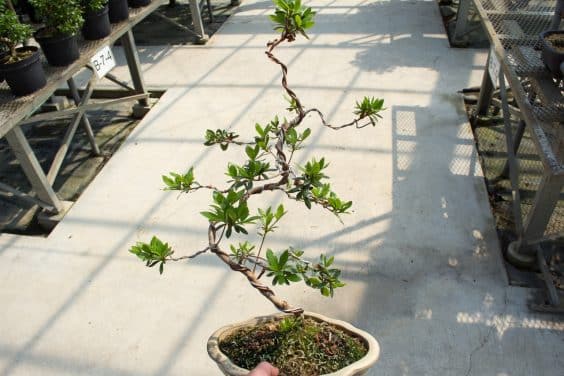
Wired whip
Not surprisingly, I spent far more time investigating the trees that already had well-developed trunks.
After an initial cutback, the azaleas were bare-rooted and placed in a greenhouse that was kept hot and humid.
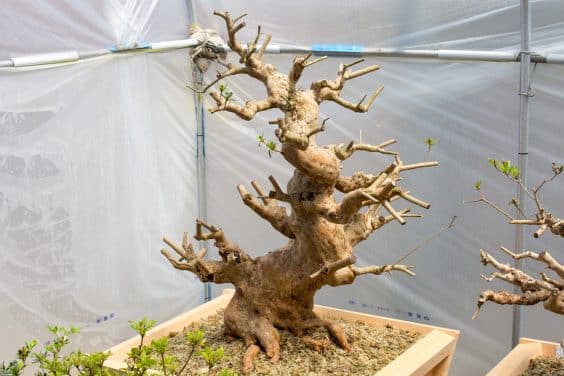
Trunk and primary branches
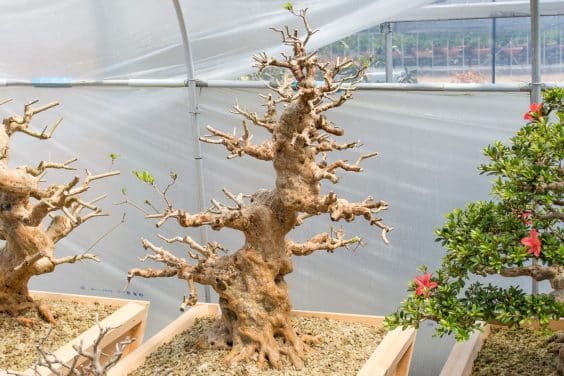
Not a bad starting point
Some of these trees had leafed out a week or two before we visited.
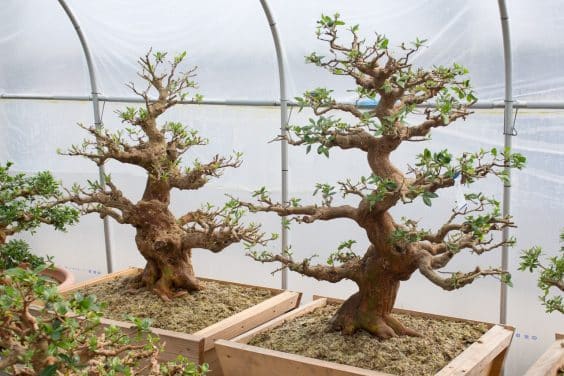
New leaves
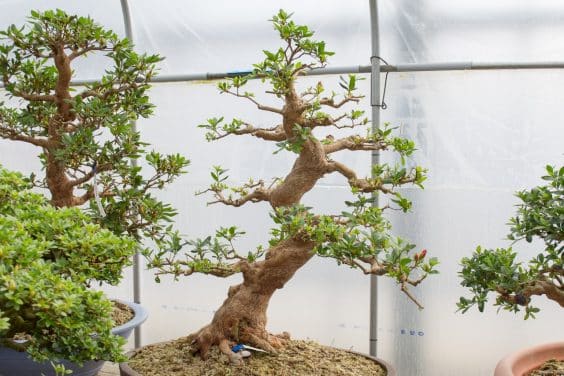
A few weeks after cutback and repotting
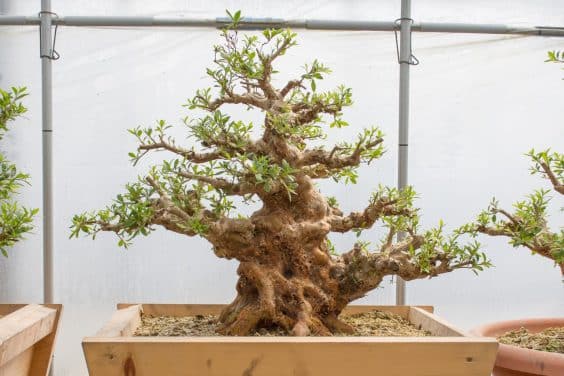
Massive trunk
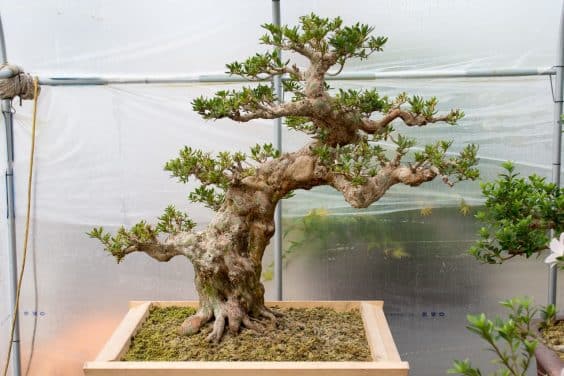
Interesting trunk
Some of the trees in the garden were just a little bit further along the development path. At this stage the trees were easy to appreciate as bonsai.
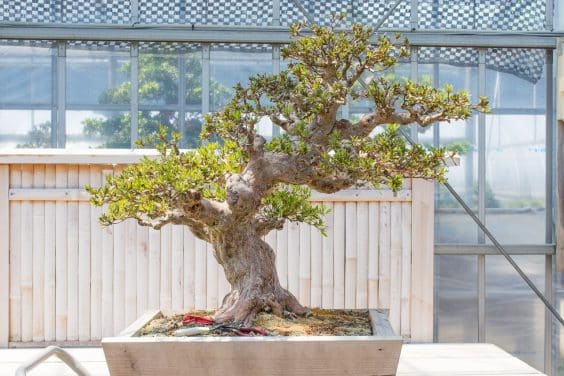
Informal upright azalea
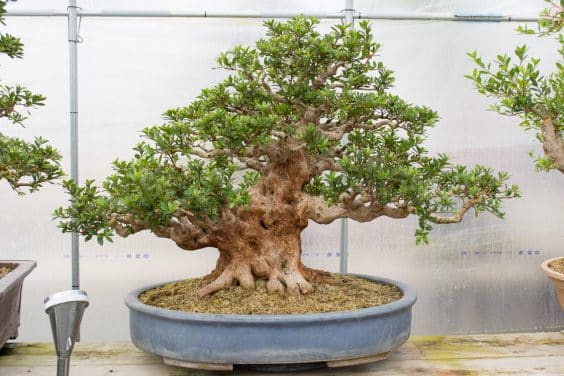
Satsuki azalea – the basic outline is in place
Unfortunately few trees in the garden had any labels, and the labels we found were usually in Japanese. I’ll be sure to report the variety names when they’re known.
Live Q&A on Facebook this Sunday!
Bonsai Empire and I will be hosting a live Q&A on Facebook this Sunday at 11:00 a.m. PDT. I’ll be showing viewers around my garden and answering as many questions as I can.
I’m looking forward to meeting you – join us on Facebook here.
Subscribe to Bonsai Tonight
New Posts Delivered Every Tuesday and Friday
cheryl says
interesting. how long in hot humid greenhouse. cooler at night? how hot and how humid?
Jonas Dupuich says
We first walked into the hothouse in the morning and it was plenty hot which made me think it was that way through the night too. They opened one of the sides after we left which cooled it down significantly. It was mid 60s during the day outside and must have been close to 80 inside, though didn’t see a thermometer or humidity meter. Our cameras and glasses steamed up and wouldn’t work for several minutes until they warmed up.
They said the trees would be in there a short time, but didn’t mention how long that would be. As the hothouse was small and the nursery humungous, I wouldn’t guess long.
Amin Younes says
Do you have any plans to bring some back? I know it’s difficult and time consuming, but it seems worth it. Those are extraordinary.
Jonas Dupuich says
I’m looking into this now – will see what the options are.
pavitra says
Very well written, Beautiful plants. Thanks for great share.
Collyer Church says
Are these trunks accomplished by grafting several smaller trees together, or are they completely “single seed” trees?
Jonas Dupuich says
Good question Collyer! As far as I know, the trees in this post – with the possible exception of the exposed root specimen – are single trees that are fairly old. I saw a number of others that were grown by fusing together many young whips – these tend to have slightly different characteristics.